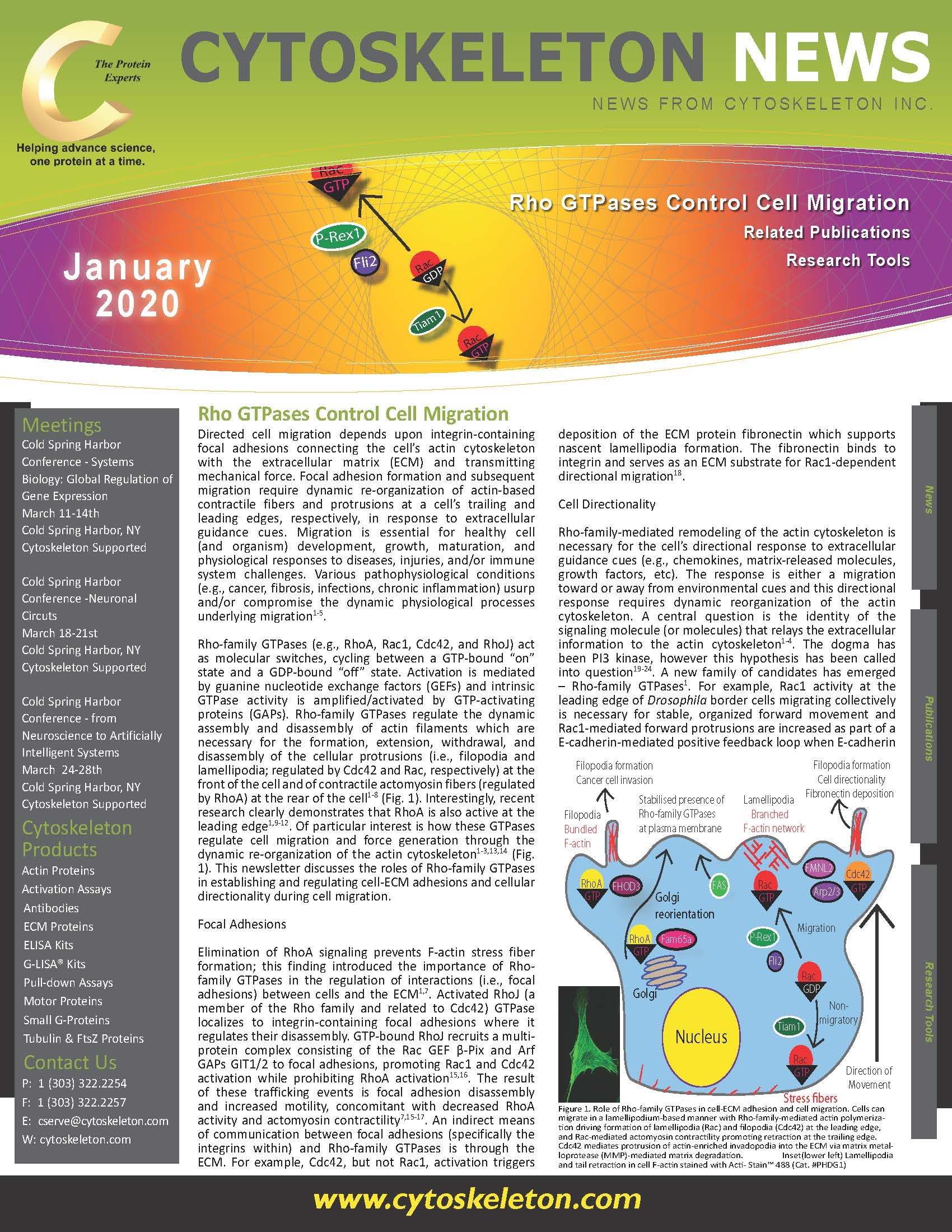January 2020 Newsletter : Rho GTPases Control Cell Migration
- By Cytoskeleton Inc. - Small G-Protein News
- Jan 10, 2020

 |
Directed cell migration depends upon integrin-containing focal adhesions connecting the cell’s actin cytoskeleton with the extracellular matrix (ECM) and transmitting mechanical force. Focal adhesion formation and subsequent migration require dynamic re-organization of actin-based contractile fibers and protrusions at a cell’s trailing and leading edge, respectively, in response to extracellular guidance cues. Migration is essential for healthy cell (and organism) development, growth, maturation, and physiological responses to diseases, injuries, and/or immune system challenges. Various pathophysiological conditions (e.g., cancer, fibrosis, infections, chronic inflammation) usurp and/or compromise the dynamic physiological processes underlying migration1-5.
Rho-family GTPases (e.g., RhoA, Rac1, Cdc42, and RhoJ) act as molecular switches, cycling between a GTP-bound “on” state and a GDP-bound “off” state. Activation is mediated by guanine nucleotide exchange factors (GEFs) and intrinsic GTPase activity is amplified/activated by GTP-activating proteins (GAPs). Rho-family GTPases regulate the dynamic assembly and disassembly of actin filaments which are necessary for the formation, extension, withdrawal, and disassembly of the cellular protrusions (i.e., filopodia and lamellipodia; regulated by Rac and Cdc42, respectively) at the front of the cell and of contractile actomyosin fibers (regulated by RhoA) at the rear of the cell1-8 (Fig. 1). Interestingly, recent research clearly demonstrates that RhoA is also active at the leading edge1,9-12. Of particular interest is how these GTPases regulate cell migration and force generation through the dynamic re-organization of the actin cytoskeleton1-3,13,14 (Fig. 1). This newsletter discusses the roles of Rho-family GTPases in establishing and regulating cell-ECM adhesions and cellular directionality during cell migration.
Also included in this newsletter:
- Tubulin and Actin Live Cell Reagents, G-LISA Activation Assay Kits, Tubulin Kits, Actin Biochem Kits
- Related Publications
